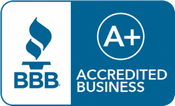
3 Common Exit Planning Mistakes and How to Avoid Them
Published on February 13, 2013
When it comes to selling a business and exit planning, all of the mistakes are made in advance—in the many years the business operated without a well-informed transition / exit game plan. Based on our experience, the following are the most common mistakes that business owners make when it comes to selling the business or transitioning the business to the family members or key employees. Take our assessment to determine your readiness for avoiding these mistakes.
Mistake 1: Confusing Growth with Value
Owners and CEOs of closely held businesses often believe that business growth equates to a higher valuation when it comes time to sell the business. A growing business is not necessarily more valuable. It's how the business grows that determines the value. Here are a couple of examples:
- ABC Manufacturing has grown its revenue by a double-digit rate for several years in a row, but the revenue increase (and 40 percent of total revenue) came from a single, large customer. At exit, a buyer or successor will likely have concerns about losing this major customer and may either reduce the price, or place onerous terms on ABC's owners at sale. The business grew, but the way it grew presents risk to the buyer.
- XYZ Consulting has achieved growth rates above its competitors in recent years, but most of its success is attributed to the skills of a few key employees. Little effort has been made to capture the business methods used by these employees, cross train other employees or create a strong management bench. While the growth is real, a potential buyer or successor may not see a way to create sustainable long-term growth beyond the talents of those few top employees.
Solution: Focus not only on growing the business, but also creating "transferable value," which means creating business factors that reduce the risk of possible revenue loss for the buyer or successor.
Mistake 2: Focusing Solely on the Top-Line Sale Price of Your Business
Most owners have the same goal when exiting their business—financial independence, or the freedom to never need a paycheck again. To attain such independence many owners focus only on getting the "maximum value" for the business when exit planning, meaning they want to sell it for the highest possible price. When examined closely, this approach is misguided for several reasons:
- There is no connection between the business's maximum sale price and the net amount the owner needs from the business at exit to achieve financial freedom. For example, the maximum value of a business might be $5 million, and the selling owner nets $3 million after costs, debt and taxes. If he or she needed $4 million to reach financial freedom, then maximum value was not enough. In this case selling for the maximum sale price does not necessarily provide for a successful exit.
- With multiple-owner businesses, getting maximum value at sale may leave some owners smiling and others crying. For example, assume a business has three owners: Owner A owns 60 percent, Owner B owns 30 percent and Owner C has the remaining 10 percent. Assume this business sells for a maximum value of $30 million. Owner A grosses $18 million (60 percent of $30 million), Owner B grosses $9 million, while Owner C grosses $3 million. After costs, debt and taxes each might take home only a half of the gross amount. While one or two million in the checking account sounds nice, it might fall far short of creating financial freedom for that particular owner. In our experience Owners A and B may regret selling the business if the outcome results in their partner and friend falling short of personal financial freedom.
- Maximum value often produces maximum taxes. Many tactics that reduce taxes at exit involve reducing the nominal value of the business, and bringing into the picture other means of compensating the seller, such as consulting agreements, employment contracts, and other devices. In most cases, taxes are the greatest cost at exit and it pays to focus on the net result not the top-line sale price.
- The owner may sell for maximum value, but that does not mean the owner will ever see all of that money. When a small to mid-sized business is sold, one cannot pay attention simply to the sale price. Beyond the gross price, the timing and terms of the deal are critically important. For example, a business sale for $20 million price might include $5 million in cash and the balance in any combination of the buyer's stock, earn out provisions, deferred payments, seller financing, and other mechanisms. The selling owner may need some or all of those deferred or contingent dollars to achieve financial freedom, but may never see some or all of it. For example, the buyer may default, the earn-out targets may never be reached, or the seller's stock may crash. Any dollars not received by the seller at the closing table are at risk.
- Maximum value for family business transfers can mean maximum financial burden on the children and maximum exposure to estate or gift taxes. Likewise, owners who intend to sell their business to key employees/internal buyers often forgo maximum value in favor of other considerations such as creating their business legacy and rewarding employee loyalty.
Solution: Determine how much capital an owner needs to receive from the business between now and the exit to achieve personal financial freedom. Analyzing the Exit Magic Number™ calculation, focuses an owner on how much they need from the business, not what the business is worth. If the owner wants financial freedom, then the exit plan must measure and reach a predefined outcome. Before going after "maximum value," owners should consider the best path to financial freedom, with minimum risk and taxes.
Mistake 3: Planning Three to Five Years Out
The third most common mistake is waiting too long to plan an exit. Many owners do not begin planning until three to five years before they are ready to exit. Often they think the best thing to do is to build up the business and sales in the last three to five years with an exit timeframe or date in mind. This approach to exit planning can lead to missed opportunities for several reasons:
- Three to five years is too little time to create transferable value, which requires proactive actions such as: developing strong successor management, creating intellectual property, deploying scalable systems and reducing owner dependency. If these strategies are not in place, they often take longer than 36 to 60 months to fully achieve.
- Cyclical external factors such as economic cycles, interest rates, stock market conditions, liquidity levels and other factors beyond an owner's control have a large impact on business sale price and terms. Many of these factors move in five- to 10-year cycles. Owners should consider aligning their exit timetable with these external forces.
- Others may put owners “in play” first. CEOs and owners often do not control the timing of their exit. Somebody may pass away or get sick, or a potential buyer or successor may put that owner "in play" before reaching his or her ideal timetable. Many businesses are sold after the owner gets a call from a competitor, strategic buyer or private equity group. Businesses that are not ready at any given moment for the owner's exit, typically have a serious weakness.
Solution: CEOs and owners need to define a vision and goals for a successful exit, and then make all business decisions accordingly. Too many simply do not know if the decisions they make today help or hurt their success at exit. If exit success is undefined, then any positive outcomes down the road will largely be attributable to luck. When it comes to exit planning keep in mind author Stephen Covey's second habit of highly effective people--they "begin with the end in mind." Owners need to know where they are going and how their choices and actions today help or hinder their effort to get there. Owners might consider factoring in exit goals with strategic business plans to connect short-term growth objectives to the fulfillment of financial freedom.






